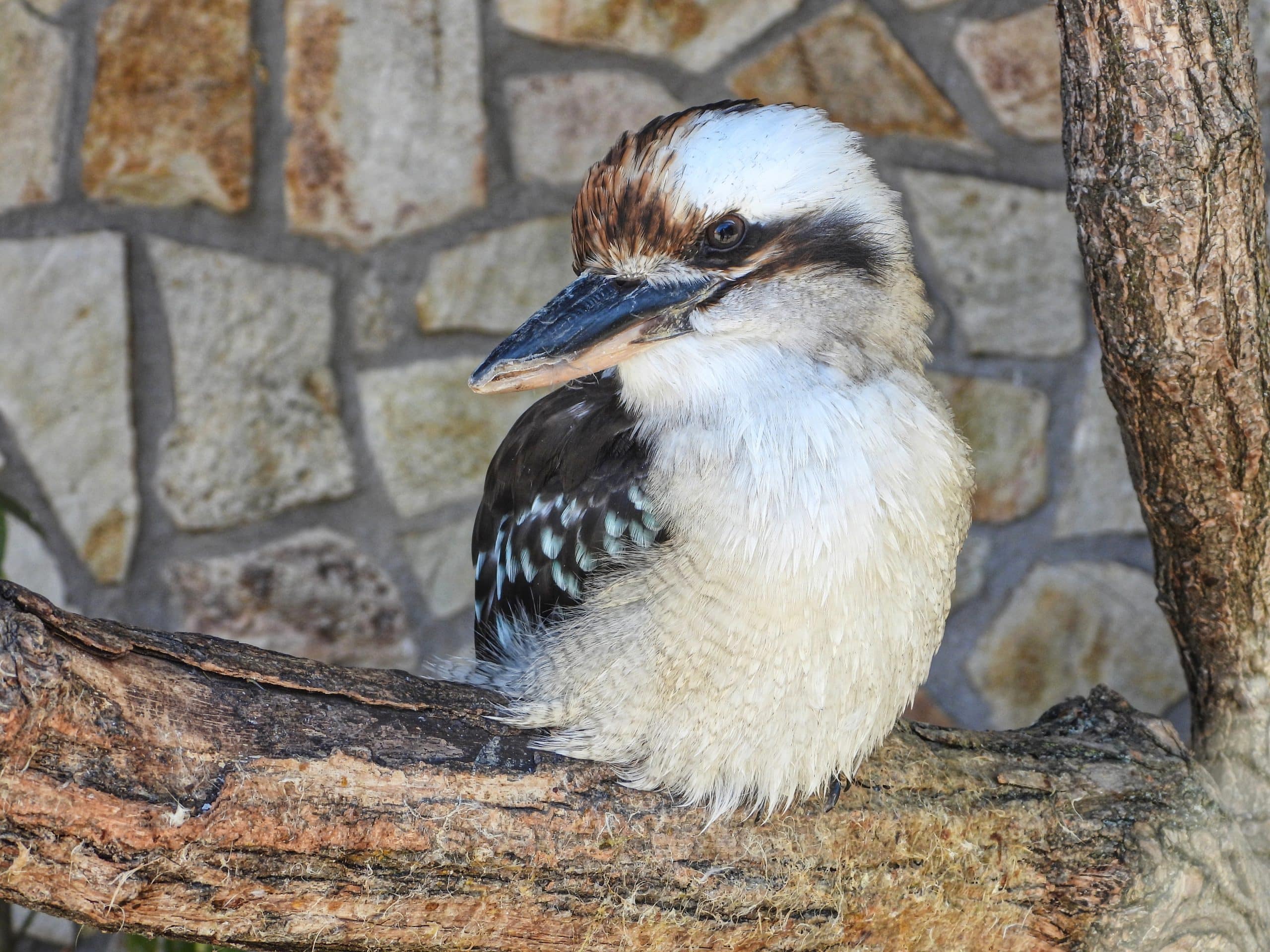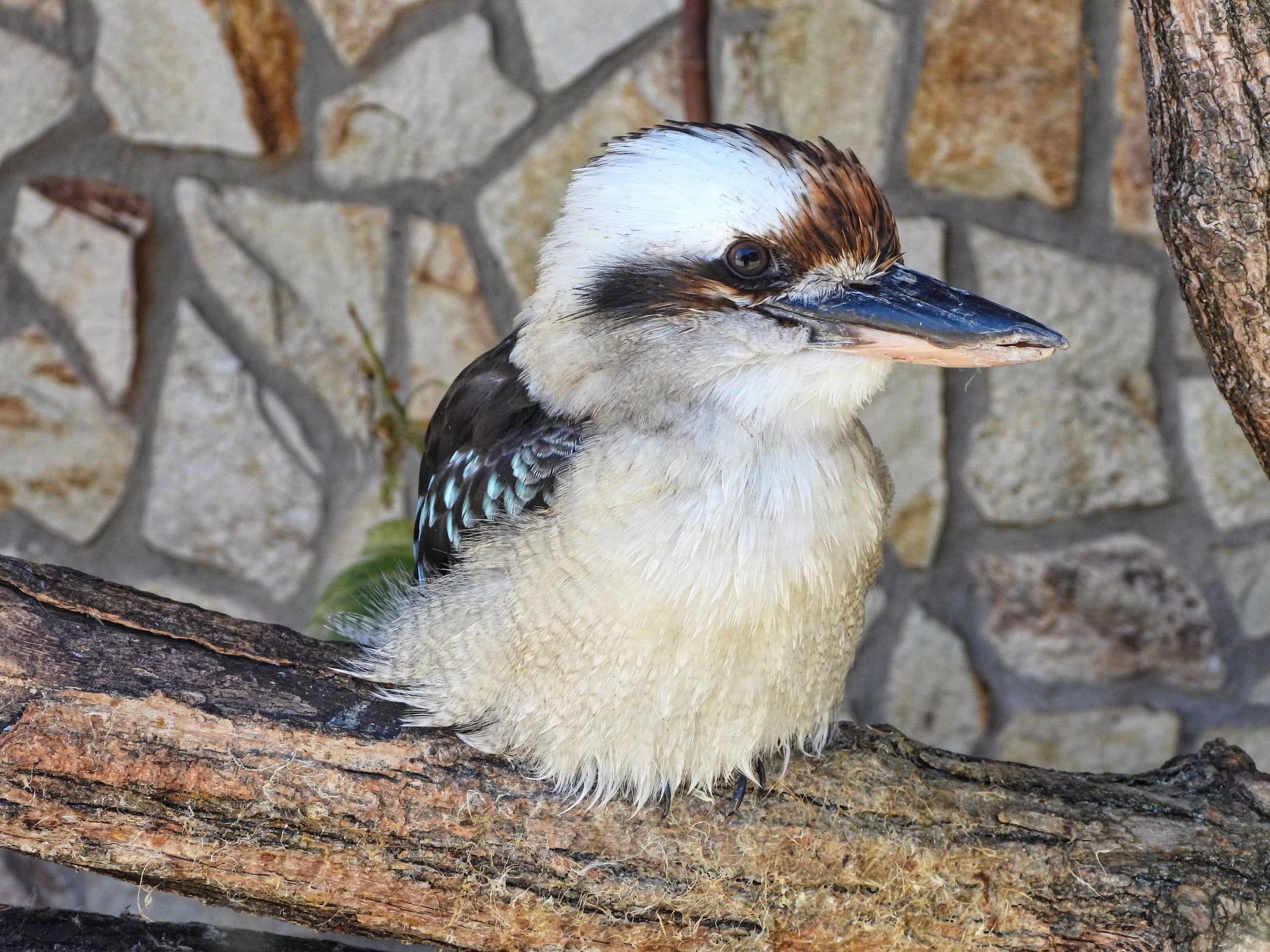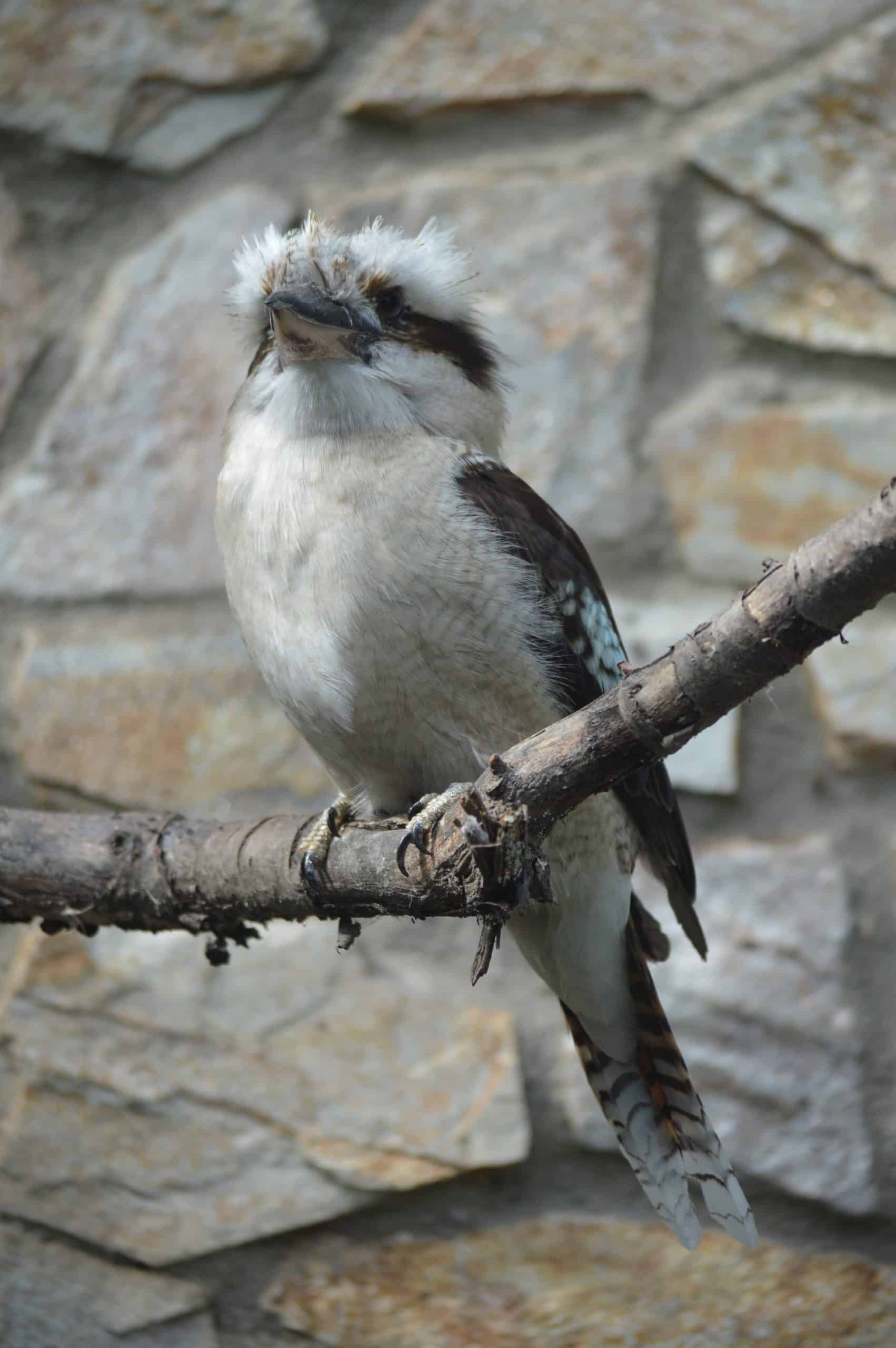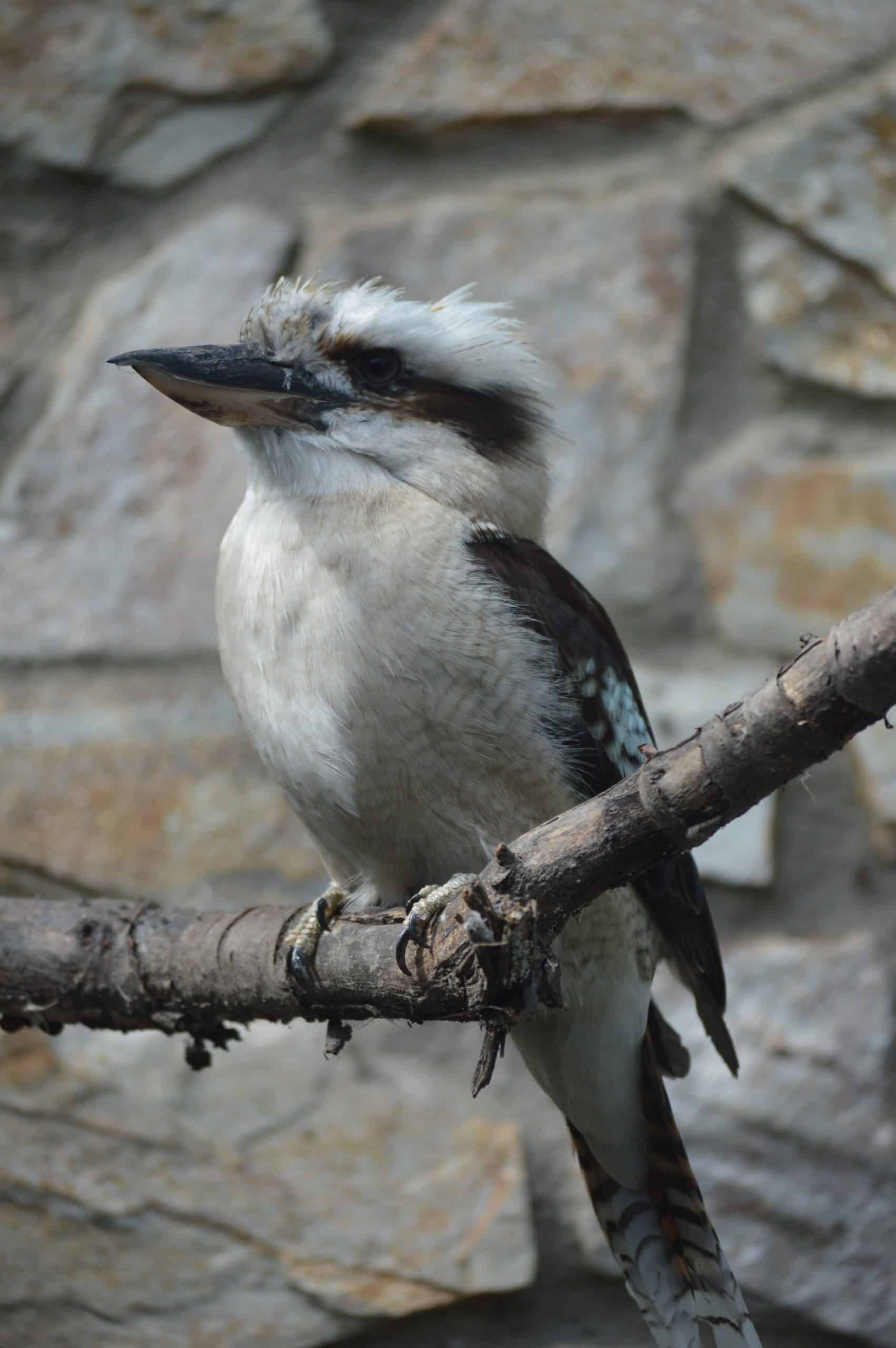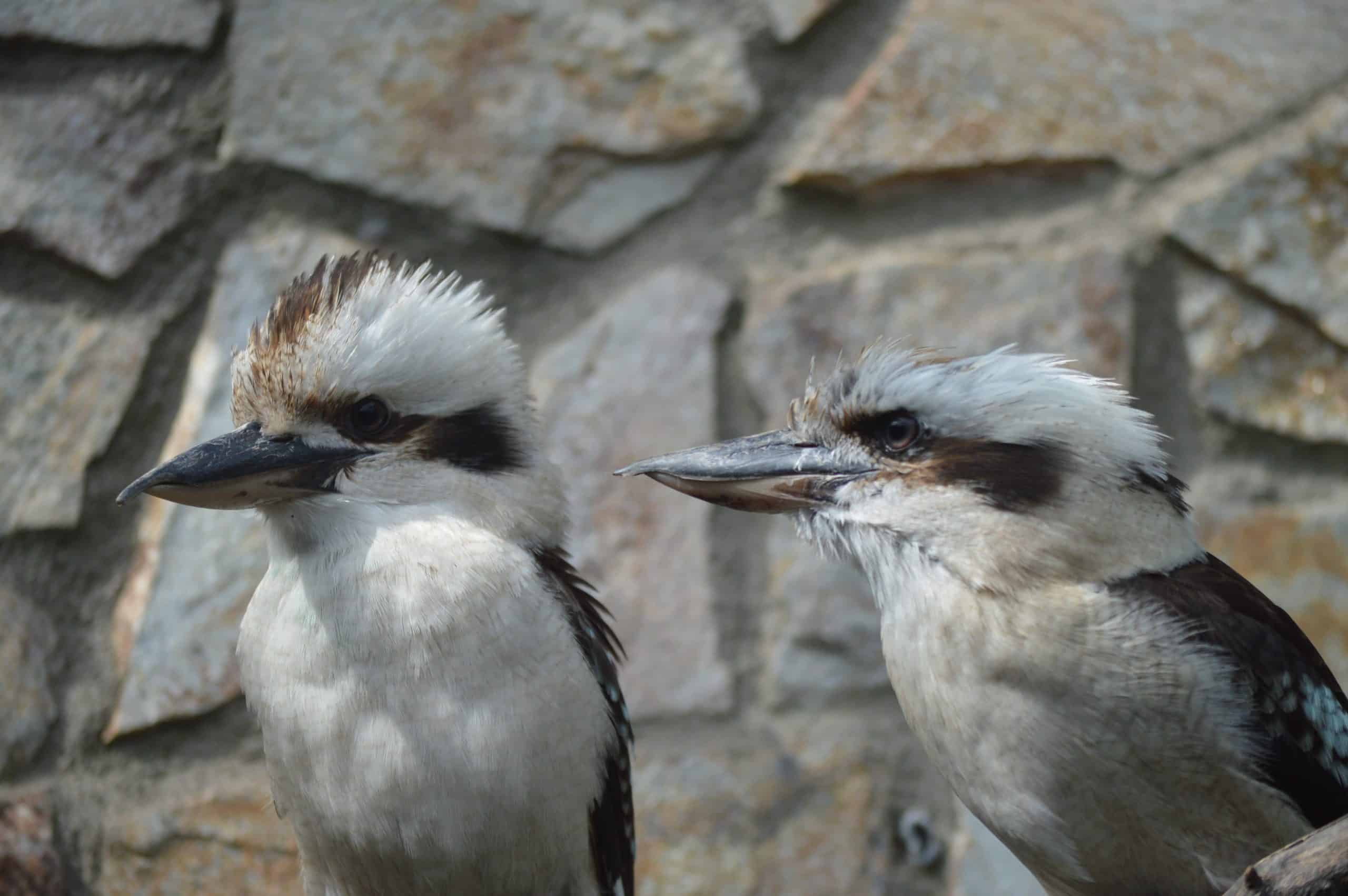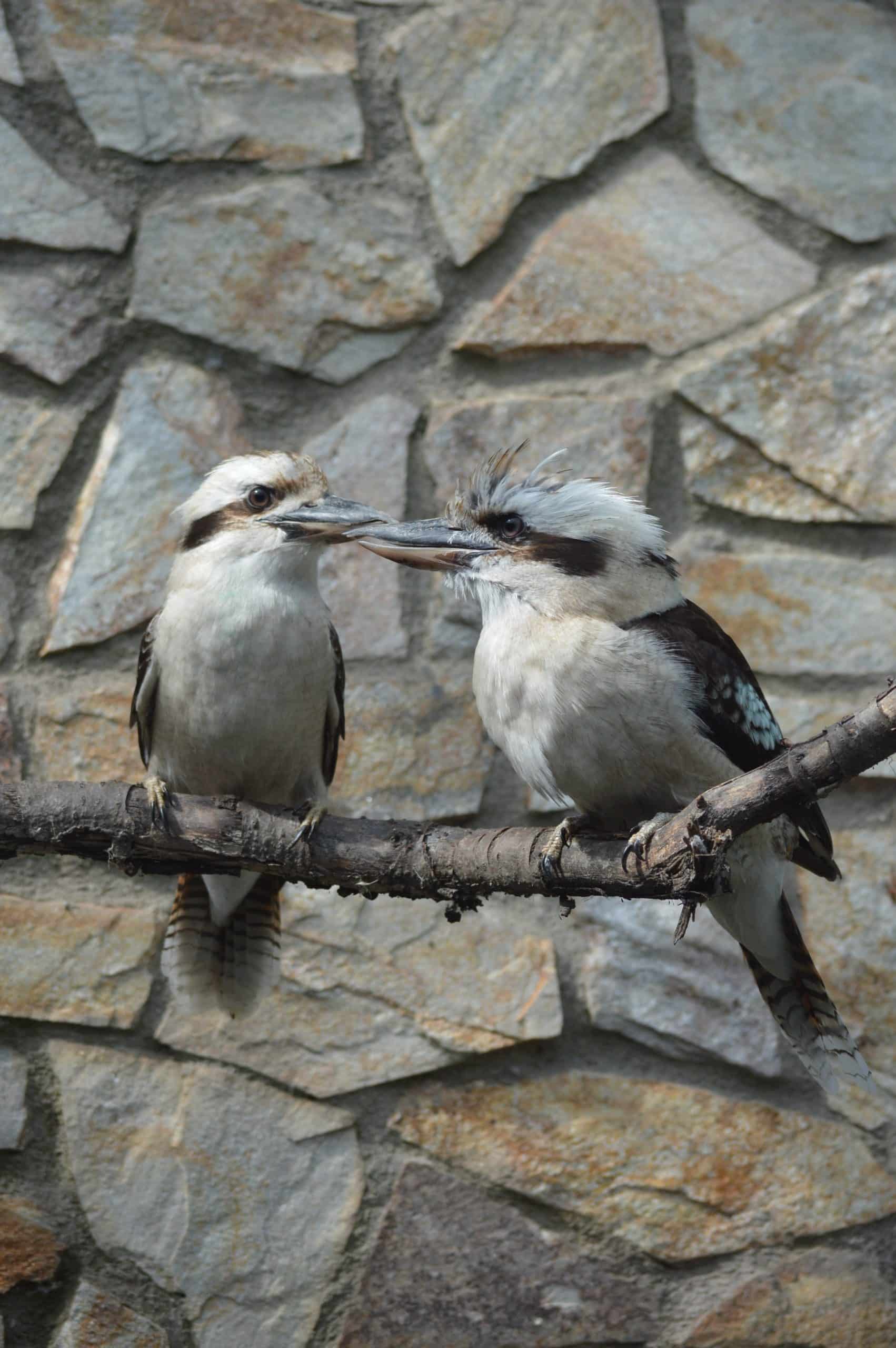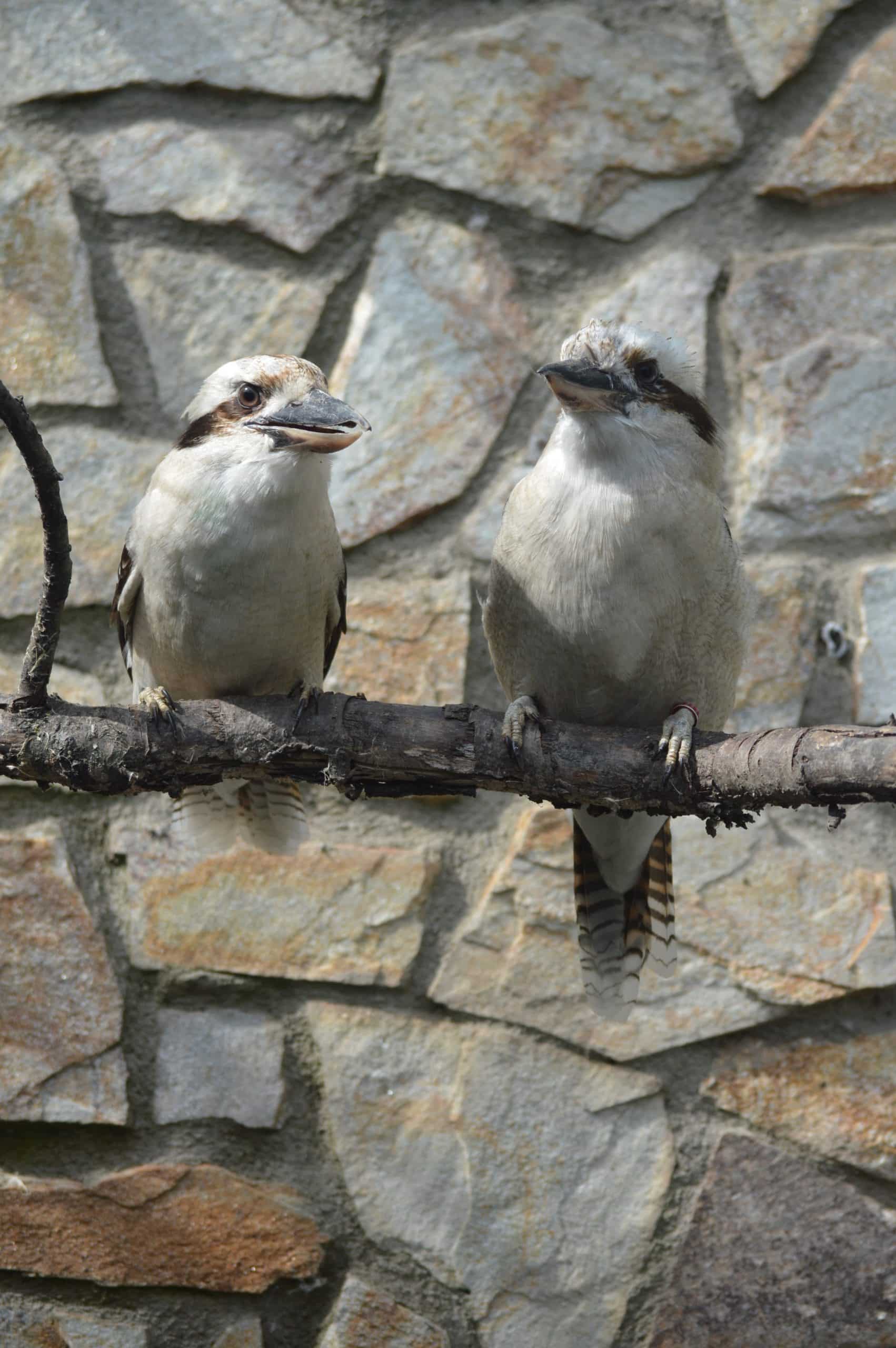The laughing kookaburra is the largest representative of the kingfisher family. The head is quite large. The base is white feathers with brown speckles. The neck is short. The beak is long, roof-shaped with a sharp tip and slightly flattened. It has brown feathers from the eyes to the sides of the head. The back of the neck, back, wings, and tail are coloured brown. Light blue feathers stand out on the upper side of the wings. The upper side of the tail feathers is reddish brown with black bands. Abdomen is grey brown with fine rippling.
It prefers forest stands with weaker trunks but rich foliage. It is a diurnal animal and relies mainly on its patience in its hunting method. He sits on a branch and lies in wait. It waits until some prey appears in close enough proximity and then pounces on it, grabbing it with its strong beak. Other anglers catch fish in a similar style.
Partners usually stay together for life. Cubs from the previous clutch often stay with their parents and help feed their younger siblings, defend their territory, or defend against predators.
The laughing kookaburra does not “fish” like other kingfishers. It primarily hunts all sorts of animals on the ground.
The laughing kookaburra, or “Giggling Jack”, got its name from its loud sounds that resemble human laughter.
According to an old Australian legend, the god chose this bird to wake people up every morning and therefore gifted it with a distinctive voice
People like to let them live close to their houses because they rid them of unwanted animals such as rodents or poisonous snakes.



